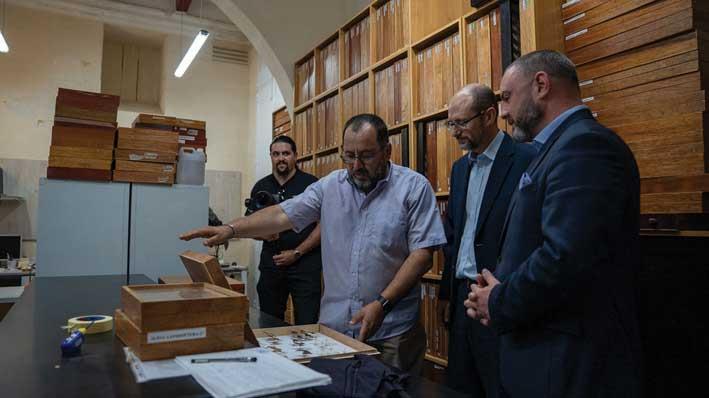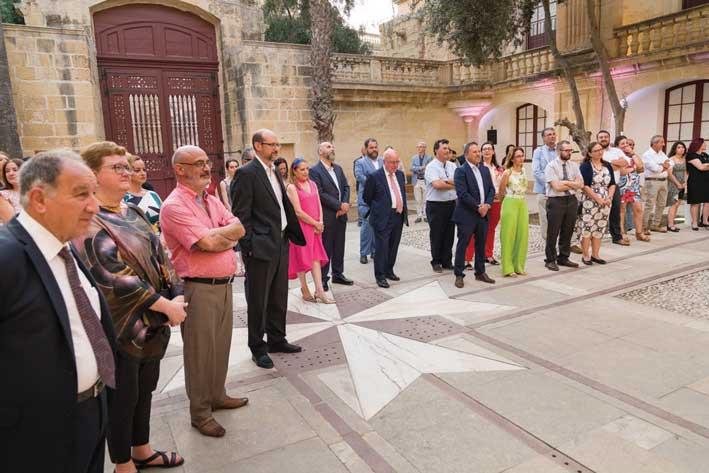The National Museum of Natural History, this year celebrating the 50th anniversary since it opened its doors at Palazzo Vilhena in Mdina, will benefit from an investment of about €300,000 in 2024.

In the aftermath of the Second World War and the loss of the National Museum in Valletta, the natural history collections that survived the bombings were not curated at all and many specimens were lost to the onslaught of dermestid beetles and other insect pests. During the war and the following two decades, the collections were stored at Casa Leoni in Santa Venera.

In 1966 the government decided to house the Natural History Museum inside Palazzo Vilhena in Mdina. The site had been closed for 10 years, having previously served as a hospital for tuberculosis patients. The restoration process to open the museum started in 1966. The curatorial team at the time was headed by Prof. Harry Micallef, a marine biologist, and included Dr Carmelo De Lucca and Dr George Zammit Maempel, respectively in charge of the birds and insects section and the geology and palaeontology section. Sadly, both Prof. Micallef and Dr De Lucca had passed away by the time the museum opened to the public in June 1973. Joseph Vella Gaffiero was appointed as Museum officer to finalise the displays, while Dr Zammit Maempel retained his post as assistant curator in charge of the geology and palaeontology sections, including the Għar Dalam cave and museum.
Once the 2002 Cultural Heritage Act came into fruition and the museum changed the direction it was heading towards, the general public's appreciation of its collections increased, as did the collections themselves through several donations. The collections are still growing constantly, which is very encouraging but at the same time exacerbates the problem of lack of storage space. The bird collection alone, which amounted to 1,700 specimens in the early 2000s, nowadays comprises more than 10,000 exemplars. Today the National Museum of Natural History is the most popular heritage attraction for families with young children. It also serves as the repository of the national biological collections, aiding both local as well as foreign researchers.
On the occasion of the museum's 50th anniversary, Heritage Malta has launched a book entitled The National Museum of Natural History: 50 Years in Mdina, A Photographic Journey, compiled by John J. Borg, the museum's senior curator. The 50 photos shown in the book may also be viewed at the museum, where they will be exhibited until December.
Speaking at the launch of the book and the exhibition, Joyce Dimech, permanent secretary at the Ministry for National Heritage, the Arts and Local Government, said that while appreciating the biodiversity of the Maltese Islands, we should also acknowledge nature's vulnerability and assume responsibility for safeguarding our natural and cultural heritage.
Heritage Malta's chairman, Mario Cutajar, announced the investment of about €300,000 that the museum will be benefiting from next year and said that each cent will reap a greater value if tomorrow's National Museum of Natural History is designed in such a way as to better reflect its new purpose, especially through its name. "We must ponder on whether this site is fulfilling the function it was chosen for and whether we should consider a more adequate space for a natural history museum. We must also consider the ties that we want the museum to nurture with contemporary society, and in what ways it can retain its relevance for future generations. We must ensure that this museum is not a reflection of the past but that, through its collections, strengthens a social consciousness about our environment and the need to protect it for our successors," Cutajar said.
Heritage Malta's CEO, Noel Zammit, said that today, thanks to the hard work undertaken since the turn of the century, the National Museum of Natural History has been transformed into a reputable institution, its collections growing rapidly and bearing a solid scientific base, making them a research reference point in Malta and abroad. So radical was this transformation that it managed to attract valuable donations from private collectors who felt they could trust the museum with their treasured lifetime collections.
Borg spoke of the natural history collection's historical journey from Valletta to Casa Leoni to Mdina. He recounted the various events that took place since the museum opened its doors to the public 50 years ago, as well as the important role in education and research projects the museum has worked on in the past years. He concluded by voicing his vision for the museum.